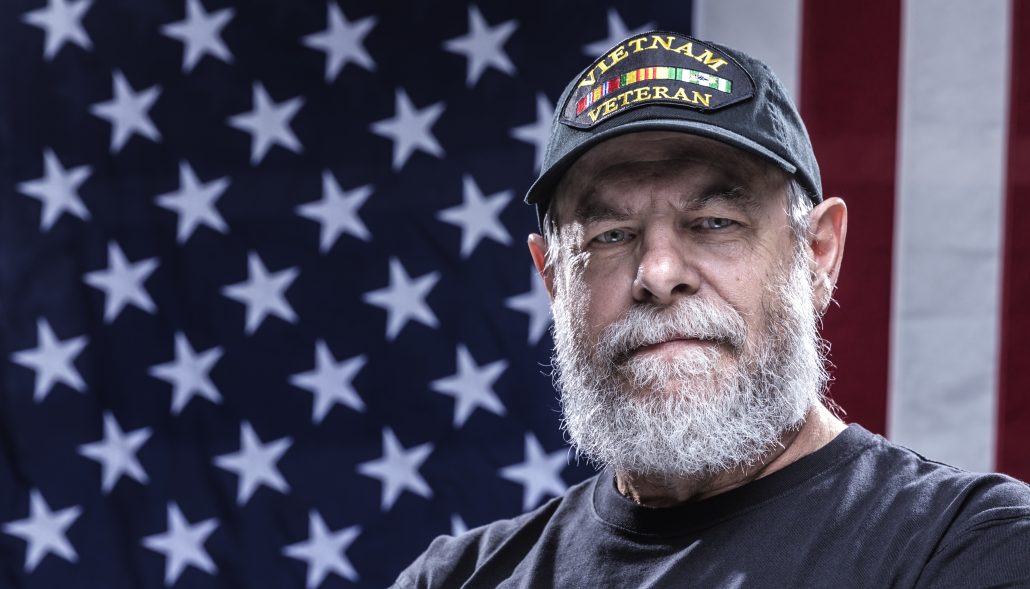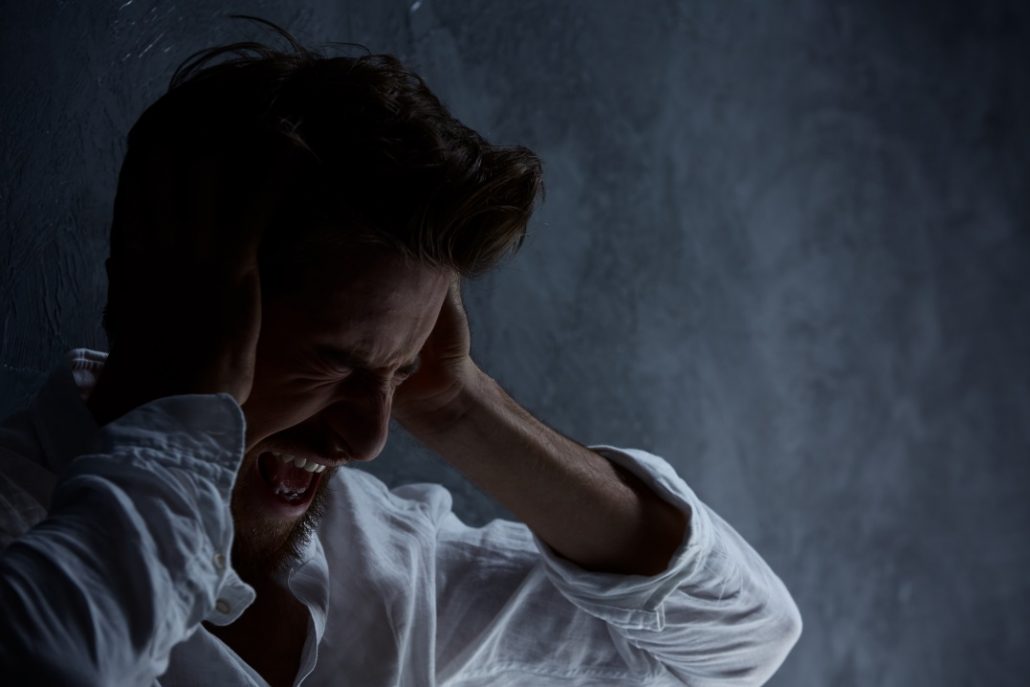by Justin Mckibben | Mar 19, 2019 | Addiction Treatment, Depression, Detox, Inpatient Treatment, Mental Health, News, Outpatient Treatment
Discrimination Through Denial of Coverage

Health insurance is probably going to be one of the great debates of this period in American history. There is already plenty of contention about how to properly provide coverage for those who need it. Some claim the changes made in the last decade have gone too far. Others argue it has not gone nearly far enough. Healthcare reform is a hot button issue in our world today. Needless to say, a big part of this conversation has to do with parity coverage for mental health. Now a new landmark court ruling is going to make a monumental difference for mental health and addiction treatment insurance coverage.
Simply put, the largest behavioral health care company in America has been denying coverage to some of its most vulnerable members to save money. And now, a federal court decision may put more of a spotlight on insurance companies.
Wit v. United Behavioral Health
The case was brought in front of a federal court in Northern California against United Behavioral Health (UBH). UBH is a company that manages behavioral health services for UnitedHealthcare and other health insurers. The court found that UBH denied claims of tens of thousands of people seeking mental health and substance use disorder treatment. The company was using defective medical review criteria in order to reject claims.
In Wit v. UBH, over 50,000 individuals were reportedly denied coverage based on the flawed review criteria. 11 plaintiffs sued UBH on the behalf of these victims. One victim, in particular, is Natasha Wit. Natasha had been seeking treatment for several chronic conditions, including:
Wit was repeatedly denied coverage for her treatment, despite the fact she did have healthcare benefits that should have offered coverage. Her family ended up paying out nearly $30,000 for treatment. And they are just one of the thousands of families to face the same discrimination.
Looking at the Marks Against UBH
According to recent reports, United Behavioral Health has been failing its members in more ways than one.
Federal courts determined that UBH developed internal guidelines that were “unreasonable and an abuse of discretion” and “infected” by financial incentives designed to restrict access to care for those who should qualify for coverage. Essentially, UBH was manipulating internal guidelines to avoid providing coverage that members had every right to under the law.
For many of those struggling with substance use disorder, defective criteria for coverage can equate to a death sentence. When looking over the requirements set by UBH, it is no wonder why the courts say they are illegitimate.
Firstly, their medical-necessity criteria fail to provide coverage to those chronic and comorbid conditions. Generally accepted standards of care state these conditions should be effectively treated, even when those conditions:
- Persist
- Respond slowly to treatment
- Require extended or intensive levels of care
However, UBH set guidelines that only approve coverage for what they labeled “acute” episodes or crises. For example, only individuals who were actively suicidal or suffering from severe withdrawal could be considered for coverage.
In other words, for someone who struggled with substance use disorder or mental illness, you had to be knocking on death’s door to get a chance at treatment. The court found that these guidelines were not acceptable.
Furthermore, UBH fails to use national evidence-based guidelines for covering different levels of care for mental health and substance abuse treatment, such as:
These are guidelines that have been developed by clinical specialty nonprofit organizations.
Additionally, UBH’s guidelines improperly required reducing the level of care, even if the providers who were treating them recommended maintaining a higher level of care. So patients would be removed from more intensive residential treatment programs and pushing into some form of outpatient therapy, even if the specialists argued that they were not ready.
This is a big deal. Most recovery advocates and healthcare providers agree that insurance companies should not be the ones telling treatment providers how to care for their patients.
-
State Mandated Guidelines
Furthermore, some states have mandated specific guidelines for evaluating the medical necessity for behavioral health services. UBH was also found to have violated these requirements for reviewing substance use disorder claims as well.
The case against United Behavioral Health was filed under the Employee Retirement Income Security Act of 1974 (ERISA). This is a federal mandate that governs group health insurance policies through private employers. More specifically, ERISA requires insurance plan administrators to function in a fiduciary capacity when overseeing employee benefit plans. This includes coverage for mental health and substance use disorder treatment.
In Wit v. UBH, the court determined that UBH was in breach of its fiduciary duties by developing and employing faulty medical necessity criteria for behavioral health services. Therefore, the court alleges that UBH is in violation of its obligations under this federal law.
What Does this Mean for Addiction Treatment Insurance Coverage?
This case is exposing insurers for refusing care to people at serious risk of death by overdose or suicide. It is important to remember that UBH is not the only insurance provider trying to find ways around federal and state coverage guidelines. Given the nature of these violations, advocates believe that regulators should immediately start examining the market conduct of all healthcare plans across the country.
Judge Joseph C. Spero in Wit v. UBH also points out that the company was circumventing the Mental Health Parity and Addiction Equity Act of 2008, also known as the Federal Parity Law.
Parity law actually requires insurers to cover illnesses of the brain, such as depression or addiction, the same as illnesses of the body, such as diabetes or cancer. In his ruling on Wit v. United Behavioral Health, Judge Spero highlights an abundance of evidence that guidelines created by the UBH were designed to diminish the impact of the 2008 Parity Act in order to keep benefit costs down. In other words, it is clear that the company was actively trying to work around federal law in order to avoid providing coverage to people with mental illnesses and addictions.
For those in the mental health and addiction communities, this brings new awareness to the discriminatory practices of treating mental health conditions differently than physical conditions. The new hope is that insurance providers will understand the consequences of discrimination against those who need help. With so much going on in healthcare, the Federal Parity Law must be protected.
Far too many people suffering from mental health and substance use disorders never get the help that they need. The last thing we need in a country devastated by an opioid crisis and rising overdose death rates is to create more roadblocks to treatment resources.
Palm Healthcare Company believes that if our country is ever going to overcome the damage of the opioid epidemic, we have to offer more comprehensive treatment options to those who still suffer. Insurance companies should not be keeping people from the care they deserve. Prevention is important, but we also believe in taking care of those who are already in the grips of substance use disorder by offering compassionate and effective care. If you or someone you love is struggling, please call toll-free now. We want to help.
CALL NOW 1-888-922-5398
by Justin Mckibben | Jun 11, 2018 | Anthony Bourdain, Celebrity, Death, Depression, Dual Diagnosis, Heroin, Mental Health, Mood Disorders, News, Suicide

Anthony Michael Bourdain, born June 25, 1956, was a man with a rich and vibrant legacy. He took us on exotic adventures to explore the world and tried to expand the view of the audience on culinary arts and culture. He was much more to so many than a celebrity chef.
Anthony Bourdain was an author, travel documentarian, and television personality. He used programs like A Cooks Tour and No Reservations to travel across the globe, focusing on the international culture, cuisine, and the human condition. He has sat down for humble lunches with President Obama, and his explosive personality has even been featured in cartoons like The Simpsons and popular FX series Archer. Bourdain has taken us to some of the most secluded corners of faraway places to chat with the locals and enjoy a simple dessert. Anthony Bourdain was widely regarded as one of the most influential chefs in the world.
On June 8th, 2018 the world was shocked to hear that Anthony Bourdain had died at 61 years old. Even more heartbreaking was to learn his death was a suicide. Over the last several days, his passing has sparked a continuous stream of dialog about mental health and the need for treatment resources. Over the years the famous traveling chef fought against drugs like heroin, as well as depression. As we remember who Anthony Bourdain was, and as we call for letting go of stigma and pushing forward with helping those in need, it is important to look at the whole story.
Kitchen Confidential
Anthony Bourdain first fought his way up the kitchen ladder in New York to become a long-time chef at Brasserie Les Hallas. Around this time, he wrote his breakthrough memoirs titled Kitchen Confidential: Adventures in the Culinary Underbelly, which took him beyond the cutting boards to carving his way through the literary map.
Part of this first memoir describes the long journey that brought him to become a chef, and a notable element of his story is extreme excursions into drugs, strung out over years. In the book Kitchen Confidential he wrote about his experiences back in 1981 working at a restaurant:
“We were high all the time, sneaking off to the walk-in refrigerator at every opportunity to ‘conceptualize.’ Hardly a decision was made without drugs. Cannabis, methaqualone, cocaine, LSD, psilocybin mushrooms soaked in honey and used to sweeten tea, secobarbital, tuinal, amphetamine, codeine and, increasingly, heroin, which we’d send a Spanish-speaking busboy over to Alphabet City to get.”
Later, Bourdain became more open about discussing his drug use. He’d even said some of these problems should have killed him in his 20s. In 2014, he did an episode of his show Parts Unknown that highlighted the ongoing opioid epidemic in Massachusetts. During the episode he says,
“Somebody who wakes up in the morning and their first order of business is (to) get heroin — I know what that’s like,”
Parts Unknown went on to be honored with five Emmy awards.
Eventually, Anthony Bourdain found himself kicking heroin in the 80s in drug rehab. When talking about finally getting clean he said,
“And we’re the lucky ones. We made it out alive. There are a lot of guys that didn’t get that far. But you know, I also don’t have that many regrets either.”
However, he admits to still worked long hours in New York kitchens interspersed with binges that consisted of cocaine and alcohol. Following rehab that Bourdain had cleaned up his act, although he continued drinking alcohol. He later wrote,
“Most people who kick heroin and cocaine have to give up on everything. Maybe because my experiences were so awful in the end, I’ve never been tempted to relapse,”
On June 8, 2018, Bourdain was found dead of an apparent suicide by hanging in his room at the Le Chambard hotel in Kaysersberg, France. At the time he had been traveling with friend Éric Ripert. Ripert reported that he became worried when Bourdain missed dinner and breakfast. According to the public prosecutor Christian de Rocquigny du Fayel, Bourdain’s body showed no signs of violence. At this point there has been no official word on toxicology tests to determine whether drugs or medications were involved in his tragic death.
Legacy
It is hard to put into words the life and legacy of a man as dynamic as Anthony Bourdain. He wasn’t just a face on TV, he was a voice trying to tell us to embrace more of the delicious variety in life. It is easier to just look at some of his many accomplishments. Bourdain wrote multiple bestselling nonfiction books over the years, including:
- Kitchen Confidential: Adventures in the Culinary Underbelly
- Medium Raw: A Bloody Valentine to the World of Food and the People Who Cook
- A Cook’s Tour: In Search of the Perfect Meal
- The Nasty Bits
His articles and essays appeared in many publications, including:
- The New Yorker
- The New York Times
- The Times
- Los Angeles Times
- The Observer
- Gourmet
- Maxim
- Esquire
He even co-wrote an original graphic novel titled Get Jiro! For DC Comics/Vertigo.
Between 2002-2018 he hosted a number of shows, including:
- A Cook’s Tour
- No Reservations
- The Layover
- Parts Unknown
He worked on various other television shows, doing everything from judging to producing.
With the sudden news of Bourdain’s death, people from all across the world have paid homage to the man who did so much to try and share the beauty of diversity with us all. In the days following Bourdain’s death fans paid tribute to him outside his now-closed former place of employment, Brasserie Les Halles on New York City’s Park Avenue.
Fellow celebrity chefs and other public figures expressed sentiments of condolence, including Gordon Ramsay and Andrew Zimmern.
Beyond his amazing adventures of cooking in different countries, Bourdain also believed in making a difference for those less fortunate. He championed industrious immigrants from places like Mexico, Ecuador, and other countries in Central and South America.
He became a big advocate in the fight against sexual harassment in the restaurant industry in 2017, calling out other celebrity chefs and people in Hollywood.
Depression and Suicide
Anthony Bourdain had also been open about his struggles with depression. In 2016 he did an episode of Parts Unknown where he traveled to Argentina for psychotherapy. At one point he tells the camera,
“I will find myself in an airport, for instance, and I’ll order an airport hamburger. It’s an insignificant thing, it’s a small thing, it’s a hamburger, but it’s not a good one. Suddenly I look at the hamburger and I find myself in a spiral of depression that can last for days.”
While the passion he had for his work is quite obvious, traveling around 250 days of the year can take a toll. More than once he described his life as lonely. During an interview with People magazine, he said he was living the dream, but admitted that it did come at a cost. That cost may have had something to do with the ups and downs of marriage and divorce he experienced over the years.
Only a few months ago, when discussing his 11-year-old daughter Ariane, Bourdain had said he felt he had to “at least try to live” for her. Although he explained he also felt he did have things to live for. Sadly, it seems that over time, the iconic chef started losing his battle with the feelings he wrestled with on the road.
Anthony Bourdain’s death is another tragic loss in a trend we have seen a spike over the years, including among celebrities. Only three days before Bourdain’s own death, fashion designer Kate Spade took her own life. Suicide is a growing problem in the United States. According to a survey published by the US Centers for Disease Control and Prevention:
- Suicide rates increased by 25% across the country over nearly two decades ending in 2016.
- 25 states have experienced a rise in suicides by more than 30%
While Anthony Bourdain may have been clean for decades, there was still pain there. While overcoming drugs may have been a huge victory in his inspiring legacy, other fights can still wear us down.
There is Help
As we remember the incredible impact that Anthony Bourdain had as an adventurer and advocate, we emphasize the importance of supporting those who need it the most. Sadly, we don’t always know when people need help. But we should always work to make sure people know that there is help, no matter what they are struggling with.
“As you move through this life and this world you change things slightly, you leave marks behind, however small. And in return, life — and travel — leaves marks on you. Most of the time, those marks — on your body or on your heart — are beautiful. Often, though, they hurt.”
–Anthony Bourdain
June 25, 1956 – June 8, 2018
Mental health is an important part of recovery for people who struggle with drugs or alcohol. Fighting depression and suicide prevention means supporting well-being and fighting for mental health support. For those struggling, treatment for mental health disorders and addiction is not always the easiest thing to seek out, but as we as a nation continue to evolve the conversation and raise awareness more people are finding out about the amazing pathways to a life in recovery that are out there. We urge you to seek yours. If you or someone you love is struggling with substance abuse, please call toll-free now. You are not alone.
CALL NOW 1-888-922-5398
by Justin Mckibben | Jun 5, 2018 | Addiction, Anxiety Disorder, Depression, Dual Diagnosis, Mental Health, Mood Disorders, Post-traumatic Stress Disorder, Recovery, Veterans, Violence

(This content is being used for illustrative purposes only; any person depicted in the content is a model)
In 2010, the United States Congress declared June 27th as PTSD Awareness Day. In 2014, the Senate designated the entire month of June as National PTSD Awareness Month. The purpose of this observation is to raise public awareness of PTSD and promote effective treatments to help those who suffer.
So what is PTSD? And how can all of us help?
Understanding PTSD
PTSD stands for Post-Traumatic Stress Disorder, which is a mental disorder that can develop when someone is exposed to a traumatic event. Some of the most common experiences that cause PTSD include:
- Warfare
- Sexual Assault
- Traffic collisions
- Life-threaten events
Sometimes people can experience post-traumtic stress disorder even if they are not directly affected by the event directly. According to the American Psychiatric Association:
- 5% of adults in the United States have PTSD in a given year
- 9% of people develop it at some point in their life
Signs and symptoms of post-traumatic stress disorder can include:
- Dreams, thoughts, or feelings related to traumatic events
- Mental or physical distress to trauma-related cues
- Attempts to avoid trauma-related cues
- Shifts in how a person thinks and feels
- Increase in the fight-or-flight response
Statistically, most people who experience a traumatic event will not develop PTSD. However, some people are more susceptible to certain forms of trauma.
Women and Post-Traumatic Stress Disorder
Women are more than twice as likely to develop PTSD.
- 10% of women experience PTSD in their lifetime
- 4% of men experience PTSD in their lifetime
This is largely attributed to sexual assault because women are more likely to experience sexual assault, and sexual assault is more likely to cause PTSD than many other events. Women are also more likely to experience things like:
- Neglect or abuse in childhood
- Domestic violence
- Sudden loss of a loved one
Sadly, women may be more likely to blame themselves for their traumatic experiences than men.
When it comes to how that trauma manifests, some symptoms are more common in women. For example, women are more likely to:
- Be jumpy
- Have trouble feeling emotions
- Avoid things that remind them of trauma
- Feel depressed and anxious
Men are more likely to have issues with anger and controlling it when dealing with PTSD, but both men and women struggling with post-traumatic stress disorder can develop physical health problems.
Veterans and Post-Traumatic Stress Disorder
Of course, one portion of the population at an elevated risk of PTSD is military Veterans. According to the RAND Center for Military Health Policy Research, 20% of Veterans who served in either Iraq or Afghanistan suffer from either major depression or post-traumatic stress disorder. Combat is one of the most traumatic situations a person can be in. Witnessing death and violence, while also being exposed to life-threatening situations can easily lead to PTSD.
However, something that most people may not realize is the amount of military sexual trauma (MST) that Veterans also experience. MST is a form of sexual harassment or assault that occurs while in the military, and it happens to both men and women during training, peacetime, and in war.
According to the U.S. Department of Veteran Affairs:
- 23% of women reported sexual assault while in the military
- 55% of women in the military experience sexual harassment
- 38% of men in the military experience sexual harassment
Because there are more male Veterans than female Veterans, over half of all Veterans with military sexual trauma are actually men.
Sadly, one of the most troubling statistics about mental health when it comes to the men and women who serve our country is that according to a SAMHSA study, only around 50% of Veterans who need mental health treatment will receive it.
Post-Traumatic Stress and Substance Use Disorders
Another heartbreaking side-effect of PTSD can be drug and alcohol abuse, which often leads to substance use disorder (SUD).
In some cases, people who experience a traumatic event that causes a physical injury will be treated with powerful painkillers. This is one way that prescription opioids have contributed to the current opioid crisis in the country. Prescription opioids often increase feelings of pleasure and calm inside the brain, which can lead to those struggling with PTSD abusing these medications in order to numb themselves to both their physical agony and their emotional trauma. In fact, prescription opioid addiction is most commonly found to correlate with PTSD.
When it comes to Veterans, developing a substance use disorder with post-traumatic stress disorder is not uncommon. According to studies from the National Institute on Drug Abuse (NIDA):
- 23% of Veterans returning from Iraq or Afghanistan showed signs of SUD.
- In 2008, active duty and Veteran military personnel abused prescription drugs more than twice the rate as the civilian population.
- In 2009, the VA estimated around 13,000 Iraq and Afghanistan Veterans suffered from alcohol dependence syndrome and required mental health treatment.
Meanwhile, those who experience sexual assault are also extremely likely to turn to drugs or alcohol as a means to cope with their trauma. According to a report by the American Journal on Addictions, 75% of women who enter addiction treatment programs report having experienced sexual abuse. Many studies over the years also report a prevalence of traumatic abuse in childhood.
Ultimately, we find that PTSD can feed into substance use disorder. Many people who struggle to control their emotions and suffer from the residual effects of their experiences try to self-medicate with both legal substances and illicit narcotics.
National PTSD Awareness Month: Call for Better Treatment
For National PTSD Awareness Month we can all do our part to help raise awareness of the impact of post-traumatic stress disorder. The National Center for PTSD is urging people to:
Learn- PTSD treatment works
Connect- Reach out to someone
Share- Spread the word
Online you can get educational materials, support information and resources to help spread awareness. The National PTSD Awareness campaign encourages everyone to work together to promote effective treatment for those who are suffering.
For those struggling with PTSD and substance use disorder, Palm Healthcare Company believes in providing innovative and life-changing treatment opportunities that help people struggling with trauma and addiction to overcome adversity and build a better quality of life. Our comprehensive programs use a holistic approach to help heal the whole person, and our facilities are specially designed to create lasting change. If you or someone you love is struggling, please call toll-free now. We want to help. You are not alone.
CALL NOW 1-888-922-5398
by staff | May 2, 2018 | Addiction, Addiction Stigma, Bullying, Coping Skills, Depression, Family, Mental Health, Mental Health Stigma, Mood Disorders, Parenting, Post-traumatic Stress Disorder, Stigma

(This content is being used for illustrative purposes only; any person depicted in the content is a model)
Bullying is a concept we are all familiar with. We each experience bullying at some point in life, to one extent or another. Even those who become bullies have often been bullied at some point. Technology and social media have created a whole new breed of cyberbullying, and too many people don’t take bullying very seriously. When you look at bullying statistics, the impact can lead to other real issues, including substance abuse and addiction.
To be a Bully
Firstly, let us look at what it is to be a bully. The title is typically described as the use of superior strength or influence to intimidate, typically to force someone to do what one wants. The site stopbullying.gov defines it as unwanted, aggressive behavior that involves real or perceived power imbalance. This behavior is repeated or has the potential to be repeated over time. It also concludes that both those who are bullied and those who bully often have serious, lasting problems.
Bullying statistics show three categories of behavior:
1. Verbal Bullying
This type of bullying is about the things we say or write. Verbal bullying includes:
- Teasing
- Name-calling
- Inappropriate sexual comments
- Taunting
- Threatening
2. Social Bullying
This involves hurting someone’s reputation or relationships. Social bullying includes:
- Leaving someone out on purpose
- Telling other children not to be friends with someone
- Spreading rumors about someone
- Embarrassing someone in public
3. Physical Bullying
Physical Bullying involves hurting a person’s body or possessions. It includes:
- Hitting/kicking
- Pinching
- Tripping
- Pushing
- Spitting
- Taking or breaking someone’s things
- Making mean or rude hand gestures
Sadly, the prevalence of bullying often convinces people that it is just a rite of passage. A lot of people don’t take the issue seriously enough. Adults often justify the behavior as a sign of immaturity, without realizing the genuine harm that comes from it.
The Impact of Bullying
Being bullied can lead to many other adversities in life, including physical violence and mental health problems.
Because both behaviors are so common, it is difficult to correlate bullying and substance use. When looking at addiction and bullying statistics, according to 2016 Monitoring the Future survey:
- More than 17% of children have tried drugs by 8th grade
- Almost 50% have used illicit drugs by senior year in high school
- Childhood alcohol use rates are even higher
According to the CDC’s 2015 Youth Risk Behavior Survey:
- 20% of American high schoolers have been bullied in school in the past year
- More than 15% have been bullied electronically in the past year
Bullying can erode a child’s self-esteem. It can deplete their confidence, even for those who parents may believe are confident enough to endure a bully. Over time, they learn to question their self-worth. If a bully targets a specific attribute of the individual, they may begin to obsess over it.Some bullying statistics show that those who have been bullied are six times more likely to be diagnosed with mental health issues. It is extremely common for victims of bullying to develop progressive behavioral disorders such as:
Over time, they may turn to alcohol or drugs to ease the pain. Also, the desire to fit in and feel accepted can lead a child using drugs to connect with people. Several studies show the risk factors for psychological health problems, substance abuse, and bullying statistics often overlap.
Similarity in Symptoms
When we look closer at bullying statistics and at the warning signs of substance abuse, we find that the symptoms are extremely similar.
Common Symptoms of Bullying
- Depression
- Anxiety
- Changes in sleep patterns
- Changes in eating habits
- Eating disorders
- Poor performance in school or work
- Loss of interest in activities
- Alcohol or drug use
Common Symptoms of Substance Use Disorder
- Mood swings
- Poor performance in school or work
- Depression
- Anxiety
- Insomnia
- Withdrawal from social activities
- Health problems
Looking at some of the more general warning signs we can see how many are present concerning both issues.
Substances and Bullying Statistics
Ultimately, drugs can become a crutch for numbing the emotional pain of being bullied. While it is harder to predict whether being the victim of bullying will lead to substance abuse, with bullies there is also a very real risk of developing issues with drug use and addiction.
Bullying statistics often show that bullies themselves typically suffer from a variety of emotional and behavioral challenges. Sometimes a child lives in a home with domestic violence, and so they become aggressive with their peers to expel their frustration. Yet, they may still use drugs or alcohol to escape the painful life at home. Even the act of bullying itself is typically an indication of diminished self-worth, and just like with the victims, that lack of self-worth can lead them to use drugs.
Some even believe bullying could be comparable to an addiction itself. Some psychologists compare bullying to other ‘process addictions’ like gambling, overworking or shopping. While we do not recognize bullying as an addiction, many believe the comparison could be helpful to address the issue.
Compassion and Care
Whether or not someone is a victim or bullying, or has been a bully themselves, we all deserve respect and compassion. When it comes to providing care for those who struggle with substance use disorder, it should always be a priority to help people develop healthy coping skills, while gaining self-worth. As people struggle to deal with emotional and behavioral challenges, there should be resources there to help guide them toward personal development. Not just getting off of substances, but also to empower them as an individual.
One issue we have with facing bullying head-on is that people typically think of a “bully” as someone inherently bad. However, life is not so simple. A child who bullies isn’t a bad child, they are just interacting with their world in an unhealthy and aggressive way. They still deserve understanding and support.
We commonly see the same stigma with people struggling with addiction. Too often they are labeled as “bad” people, but the truth is that they are just dealing with things in a self-destructive and unhealthy way. Dealing with substance use disorder and with bullying means meeting it with love and care, not judgment and punishment.
Perhaps if focus more on supporting people, we have a better chance of changing addiction and bullying statistics for the betterment of everyone.
Palm Healthcare Company believes in the importance of compassionate and comprehensive care for those struggling with substance abuse and addiction. Providing a safe medical detox, a personalized recovery program and an innovative approach to holistic health, our mission is to help people transform into the person they want to be. If you or someone you love is struggling, please call toll-free now.
CALL NOW 1-888-922-5398
by Justin Mckibben | Apr 18, 2018 | Addiction, Anti-Social Personality Disorder, Anxiety Disorder, Depression, Dual Diagnosis, Mental Health, Mood Disorders, Post-traumatic Stress Disorder, Schizophrenia

(This content is being used for illustrative purposes only; any person depicted in the content is a model)
It is not so far-fetched to be told that someone whose life is consumed with drug or alcohol dependency can find themselves facing the emotional and mental fallout. When dealing with mental health issues, it is not rare for people to also struggle with substance use disorder. Co-occurring conditions such as these tend to feed off of each other, or even help create one another.
It is almost like when someone has high blood pressure, we are not surprised when they develop heart problems. Sometimes side effects and symptoms of one condition can nurture new ailments.
According to so researchers, there are some more common combinations of co-occurring disorders with addictions. So which addictions are most likely to co-exist with each mental health condition?
Here are 5 of the most common co-occurring disorders with addictions (not in any particular order):
-
Schizophrenia with Marijuana Addiction

One disorder that commonly co-exists with a substance use disorder is schizophrenia. The American Journal of Psychiatry released a study that suggests approximately half of all people with schizophrenia also have a substance abuse disorder.
But one substance stands out the most when looking at people living with schizophrenia- marijuana.
The exact cause of schizophrenia is unknown, but many suspect a combination of environment, genetics and altered brain chemistry and structure to all play a part. So it is unclear why people with schizophrenia would abuse marijuana. Especially since this drug typically produces many of the same symptoms these people experience when in the midst of a schizophrenic episode. Some of these symptoms include:
- Short-term memory problems
- Delusions
- Unusual or dysfunctional ways of thinking
- Difficulty beginning and sustaining activities
- Impaired executive functioning
While not all symptoms are the same for everyone, some of these more common symptoms definitely overlap between the two. While it may not be obvious why, research suggests it is pretty obvious that marijuana is most popular for people with schizophrenia.
-
Alcoholism and Anti-Social Personality Disorder

You might be surprised with this one because most people assume alcohol is most commonly matched with depression.
Anti-social personality disorder is easier to understand when one explains the concept of personality disorders in general.
To put it simply, a personality disorder is an enduring pattern of personal experience and behavior that deviates noticeably from the expectations of the individual’s culture, which leads to personal distress of impairment. So antisocial personality disorder (ASPD) is characterized by a tendency to disregard and even violate the rights of others. Symptoms can vary from egregious to outright dangerous. They include:
- Irritability
- Aggressiveness
- Lack of remorse
- Consistent irresponsibility
- Recklessness
- Impulsivity
- Deceitfulness
- Lack of stability in a job and home life
- Disregard for society and laws
- Violation of the physical or emotional rights of others
Often the more intense cases earn the titles of sociopathic or psychopathic.
Alcohol abuse very frequency co-occurs with other mental health disorders. However, according to the National Institute on Alcohol Abuse and Alcoholism (NIAAA), the disorder with the closest connection to alcoholism is anti-social personality disorder.
In fact, people who drink to excess on a regular basis are 21 times more likely to deal with ASPD when compared to people who don’t have alcoholism.
The NIAAA also states that both of these disorders typically develop early in life. However, alcoholism can actually make the underlying mental illness worse. Intoxication can lower an individual’s inhibitions, which makes their antisocial behaviors more prevalent. This may also lead to more dangerous manifestations of the disorder.
-
Anxiety Disorders and Cocaine Addiction

Cocaine is an extremely powerful narcotic stimulant, which gives users feelings of intense euphoria. However, the tradeoff is a very steep price to pay considering how dangerous this drug really is. Continued cocaine use typically leads to symptoms that essentially mirror an anxiety disorder, including:
- Restlessness
- Hallucinations
- Paranoia
- Insomnia
- Difficulty concentrating
- Aggression
Because cocaine is a stimulant, it speeds up and amplifies activity of the brain’s neurotransmitters. Certain neurotransmitters at higher levels induce anxiety. So anxiety is actually a symptom of cocaine use already. Cocaine use also has the potential to create psychotic episodes. Some people even experience severe mental symptoms as a result of use.
As a long-term effect of cocaine use, brain circuits are more sensitive while struggling to respond to natural stimuli, and the results are often related to mood and mental health. Statistics show that there is a very high risk of anxiety and cocaine abuse occurring together. Then if you already have an anxiety disorder, the risk becomes even higher that you will develop a severe emotional problem when using a drug like cocaine.
While the adverse effects of cocaine use can eventually fade for those able to achieve a long-lasting sobriety, sometimes the damage lingers. Those unusual thoughts and behaviors can continue even long after someone has given up the drug.
-
Prescription Opioid Addiction and PTSD

Post-traumatic stress disorder (PTSD) is a mental illness that takes hold in the aftermath of an intense and traumatic experience. Often, people who survive tragedies, war and other dangerous or life-altering events will experience PTSD.
In some circumstances, people will leave their experience with serious physical injuries, and often, those injuries are treated with prescription painkillers. This is just one way that prescription opioids have contributed to a huge epidemic that has been hurting America for the past several years.
Prescription opioids often boost feelings of pleasure and calm inside the brain, and sometimes people who have PTSD end up abusing these medications in order to experience euphoria and numb themselves to not just their physical agony, but also their emotional trauma. This can become an endless cycle of self-medicating. This is especially true with veterans. In fact, some research indicates that veterans with pain and PTSD are 3 times more likely to receive opioids compared to those without any mental health disorders.
It is true that having effective pain medications is very important to improve the quality of life for those with physical pain, especially chronic pain patients. However, mixing powerful opioids like prescription painkillers with PTSD can lead to tragic outcomes. With increasing rates of veteran suicides over the past several years, one can only image what impact the surging opioid crisis may have had on those struggling with PTSD.
-
Depression with Heroin Addiction

Throughout one of the worst drug epidemics in American history, heroin has been a driving force behind countless overdoses and skyrocketing death rates. Heroin isn’t just devastating physically, but also mentally and emotionally crippling. The connection between these adverse effects and depressive disorders is remarkable.
The allure of heroin is that is can make users feel an overwhelming sense of pleasure for a short time. However, long-time use of heroin can burn out the portions of the brain responsible for producing natural signals of pleasure, leaving them incapable of feeling good on their own without the drug. The drug alters brain chemistry and creates mood changes.
Advances in Psychiatric Treatment estimates that 48% of opioid users have experienced depression at some point in their lives.
Extended use of heroin can eventually cause a form of brain damage that leads to depression. Users can become physically incapable of feeling happiness unless the drug is present. Withdrawal symptoms from heroin can also exacerbate symptoms of depression. Many of them are actually overlapping symptoms, such as:
- Restlessness
- Irritability
- Slow thinking, speaking or body movements
- Loss of interests
- Sleep problems
- Physical pains
- Headaches
- Changes in appetite
The combination of depression and heroin addiction is incredibly common. Sometimes it can be difficult for people to tell which issue came first, but ultimately they can both be exceedingly debilitating, or even deadly.
Dual Diagnosis Treatment

Dual diagnosis means that a person is dealing with two medical conditions that are co-occurring. In regards to the field of drug addiction, dual diagnosis specifically means that someone is struggling with both substance use disorder and another mental or behavioral health issue. Sometimes it is because prolonged drug use has contributed to developing a mental health issue, while other times it is because someone has tried to self-medicate when facing a mental health issue.
Dual diagnosis treatment is so important because it provides the opportunity to treat both co-occurring disorders simultaneously. For those suffering with more than one disorder, it is not nearly as effective to focus on treating one while ignoring the other. Holistic healing is all about addressing every aspect of each individual to help them find success in every part of their life.
Palm Healthcare Company believes in providing holistic addiction resources to help treat not just the addiction, but also any other issue that could be holding you back from achieving a full life of lasting recovery. If you or someone you love is struggling, please call toll-free now.
CALL NOW 1-888-922-5398
by staff | Jan 30, 2018 | Anxiety Disorder, Coping Skills, Depression, Dual Diagnosis, Holistic Treatment, Mental Health, Mood Disorders, Post-traumatic Stress Disorder, Recovery, Self Improvement

Maintaining Mental Health and Well-Being
by Thomas G. Beley, Ph.D., LCSW
Executive Director of Palm Healthcare Company
We hear a lot about the importance of mental health. However, exactly what is mental health. If one looks at the research literature there is not very much written about what constitutes mental health. Often times, by default, mental health has been referred to or alluded to as the absence of a mental illness. To complicate the situation further, the literature seems to be overly ripe with how to treat various mental disorders as well as how to reduce the specific symptoms a person may be experiencing. Unfortunately, our society has become overly preoccupied with treatment focusing on the reduction of a person’s symptoms as an indicator of a mentally healthy person. Although treatment and symptom reduction are important facets of a person’s mental health, neither treatment nor symptom reduction guarantees a sense of well-being.
In examining the various disorders as outlined in the DSM IV and the plethora of research that has been conducted on how to treat these disorders, there appears to be a common thread that seems to exist between all of these disorders and conditions. The common thread appears to be an on-going interrelationship between the biological or neuro-chemical make-up of a person; the existing stress factors that may be presented in a person’s life; and the actually coping skills or mechanisms that a person uses as a way of dealing with everyday life. Furthermore, it appears that all three of these influences have the ability to impact the other for the better or for the worse. This article will examine these various influences on a person’s mental health and how these influences are involved in maintaining a person’s sense of mental health and well-being.
Stress
Stress is a constant in everyone’s life. Hans Selye, the father of the stress response, defined stress as “any change.” So the fact of the matter is that stress is a constant in one’s life. In essence, the moment a person opens their eyes in the morning, that’s stress. The moment that same person gets out of bed, that’s more stress. And, the moment that person jumps into the shower, even yet more stress. In most instances, our bodies are able to handle this stress much of which is attributed to a person’s balanced neurobiology and neurotransmission.
Much of this can be explained through the “fight or flight response” of a person. This mind-body connection, which has been a part of human evolution, has worked the same way over hundreds of thousands, if not millions, of years, the same way. Any time a person’s brain, either conscious or unconscious, senses any type of danger whether real or not, there are a whole host of stress hormones that are being released into the body (neurotransmission) gearing the person’s body up to do one of two things, to run away from that danger or to fight that danger. In either scenario, the body has to be an efficient machine. Although a person doesn’t necessarily have to hunt for their food any longer per se or run away from man-eating animals, a person is still faced with the everyday modern dangers of life such as unemployment, finances, marital problems, parenting, etc. The list is endless. The important point, here, is that regardless of what that perceived danger, the mind, and body via neurotransmission, kicks into action.
A problem that arises, however, is that once the mind and body have turned it up a notch to deal with the stress, it takes the body a longer time to calm down. The mind or more specifically the neocortex (the thinking part of the brain) is able to easily dismiss stress and false alarms of stress in a relatively short manner. A person can become instantly alarmed at the prospect of their electric being shut off from a notice received in the mail, however, instantly “feeling” a sense of relief realizing that the notice is not meant for them but for the neighbor. Although the mind has dismissed the danger, the stress hormones have already been released to key parts of the person’s body. Studies have shown that these stress hormones or the signaling of the mind to the body to calm down can take anywhere between six hours to seventy-two hours for the body to receive the signal of no danger. So what can actually happen is that a person can be walking around “feeling good” and the least little thing can happen, the proverbial straw that breaks the camel’s back, that can send a person into a stressed or panic state.
There are three key points that need to be remembered about stress.
The first key point is that stress is a constant in anyone’s life by virtue of the constant change a person is going through from the moment they wake up in the morning to the time they go to bed at night. All too often a person thinks of stress as “nothing bad has happened to me lately.” It is irrelevant to ask the question whether a person is stressed, it is more appropriate to think in terms of whether that person’s neurobiology is handling that stress in an appropriate manner.
Secondly, the body doesn’t really know the difference between “good stress” and “bad stress.” It may be more relevant for a person to think in terms of how much and to what extent has that person experienced change during the course of the week or the month regardless of whether that change has been “good” or “bad.” The more change the person has experienced, the more stress that has been absorbed into the body.
And, finally, the third key point is that the body is a very slow responder. It takes the body a much longer time to calm down than the cognitive processes that are occurring in the brain. A person needs to be mindful that just because they are “feeling relaxed” doesn’t necessarily mean that their body is relaxed.
It is not always feasible to assume that lowering the stressful situations in one’s life is the answer since many people may be unable to avoid a stressful lifestyle. Firefighters, police officers, emergency room medical staff, are all faced with potential chronic conditions of stress. It is not fair to say these individuals will be excluded from feeling a sense of well-being because they are in constant stressful situations. It is important for a person to be aware of trying to lower stress in their life where they can, but for those individuals who are in situations where stress is a constant, it will be more important for that person to develop the necessary coping skills to deal with stress such as exercise, nutrition, yoga, or meditation.
Neurobiology
Research in the neurosciences in recent years has continued to shed new light on a person’s brain chemistry and how neurotransmission impacts a person’s sense of well being as well as behavior. There have been numerous studies conducted on certain neurotransmitters of well being such as serotonin, GABA (gamma-aminobutyric acid), dopamine, and others to suggest the necessity of these neurotransmitters for the person to function at an optimal level. This is where the explosion of new prescription drugs has come on to the market to solve the ills of the world. Needless to say, pharmaceutical companies have long since been proponents of this neurobiological research due to the ability to develop newer and more efficient drugs to attempt to balance a person’s neurochemistry. An important aspect that has evolved over the years, however, is the recognition of, not only the importance of a person’s neurobiological chemistry to be in balance for a sense of well-being, but also the fact that a person’s biochemical makeup can be extremely delicate and subject to a whole host of outside influences such as stress, medical conditions, nutrition, and behavior that can throw a person’s neurochemistry off creating a variety of symptoms. As a result, there continues to be a growing movement toward alternative methods of treatment to address brain chemistry issues such as acupuncture, nutrition, or chiropractic intervention to intervene and/or to enhance a person’s brain chemistry.
Regardless of whether you are a proponent of Prozac or a devotee to acupuncture, the important point to emphasize is that a person’s neurochemistry plays an important role in a person’s sense of well-being and contentment. Furthermore, the imbalance of neurotransmission in the brain can interfere with that person’s overall level of functioning and well-being.
Coping
Coping with everyday life situations is another area which is an important influence on a person’s ability to achieve a sense of well-being. A person needs to feel a sense of satisfaction about how they handle given situations that confront them whether if it is with themselves or with others. However, in order to do this effectively, a person needs to have a repertoire of coping mechanisms to choose from. All too often, a person doesn’t develop or change the necessary coping skills needed to deal with life situations. An interesting point to make, here, is that the human species, which is supposed to be at the top of the so-called food chain of life, is the only species that will continue to do the exact same behaviors to problem solve a situation despite the fact that these problem-solving behaviors may have repeatedly failed in the past. For a variety of reasons, it appears that change is often difficult for a person to make. In order to effectively cope with a situation, it is of vital importance for a person to maintain a degree of flexibility, adaptation, and a willingness to change regarding any given situation.
In a sense, a person’s self-esteem can be viewed as being borne in a series of “failures.” Once a person makes a decision to do something, it is usually followed by a series of behaviors or actions. Often times these initial behaviors and actions are not going to be a success since doing something for the first time often leads to a number of miscues or possible “failures.” However, if a person is willing to persist at following through with these behaviors and actions or be willing to try something different in an attempt to reach their goal, there is a greater likelihood the person will develop a sense of competence in that area. Once that person achieves that level of competence, a person’s self-esteem will increase. Once a person’s self-esteem has increased, the easier it becomes for that person to make decisions and take action in other areas of life and the cycle begins all over again.
The important part of coping is that both coping mechanisms and skills need to be constantly reviewed and refined by a person. There is no guarantee that a particular coping skill or mechanism is going to work in all situations. As a person begins to adapt to the various complexities of life, the greater the need for a more complete range of coping skills to maintain that sense of well-being.
The Systemic Relationship of Neurobiology, Stress, and Coping
In considering these various influences on a person’s mental health and well-being, it is vital to understand the interrelationship that exists between them. One must comprehend that all three of these influences are constantly impacting one’s functioning and a person cannot focus on one of these areas without taking into consideration the ramifications it will have on the other areas. There is a cyclical force that each area has on the other areas and vice versa. For instance, if a person is experiencing an inordinate amount of stress, whether it is
“good stress” or
“bad stress,” the neurochemistry of the brain is going to be impacted. If the neurochemistry of the brain is affected, there is a greater likelihood that this imbalance is going to affect the neurotransmission which can result in symptomatic behaviors such as panic, anxiety,
depression, or other symptomatic behavior. As a result of the symptomatic behavior the person may be experiencing, the person’s coping mechanism and problem-solving abilities are probably going to be compromised at least to some degree. If the person is unable to cope with a given situation in an effective manner, there is the potential of the stress level increasing again. As a result, there is a cyclical process of impact.
Balance and Well-Being
It appears that a key factor for a person maintaining mental health and a sense of well-being is the ability to monitor and balance the areas of neurobiology, stress, and coping. The challenge, however, that confronts a person is the ability to maintain this balance on an on-going basis. One of the difficulties stems from the fact that it is not always clear as to what a person needs to attend to at any given time. For instance, let’s say that a person’s depression may simply be stemming from their genetic make-up. If this is the case, it would probably be more prudent for that person to be prescribed the appropriate anti-depressant medication to correct the neurobiological issue as opposed to getting involved in therapy or attempting to reduce stress. Although the latter two methods can be extremely effective in the long run, the more effective and efficient intervention may be from a pharmacological approach.
On the other hand, let’s say a person is depressed as a result of a great deal of existing stress that is occurring in their life, let’s say from being fired from their job, or the person has limited coping skills to deal with real-life traumas like the death of a loved one. In this scenario, a pharmacological intervention may be of little value, since the depression may be more a product of “normal” life situations that would be better addressed through support and the development of better and more appropriate coping skills for that given situation. In these situations, yoga, meditation, and exercise may be extremely efficient in addressing stressful situations whereas psychotherapy can be effective in developing better coping skills. In many instances, it is not necessarily the fact that a person’s anti-depressant or anti-anxiety medication is not working, the fact of the matter is that the person’s life is still a mess and they need to begin to put it in order. Unless the person is able to address these matters, the likelihood of a person responding effectively to a pharmacological intervention is going to be minimal.It is safe to say that one’s mental health and sense of well-being is not a given in anyone’s life. Just because a person has a positive outlook on life, doesn’t mean that their genetic make-up couldn’t play a factor in that person’s level of functioning. Or, the person who has savvy coping skills in dealing with incredible amounts of stress, doesn’t mean that the accumulative effects of those stressors will not take a physiological toll on that person via heart disease or cancer.
Maintaining mental health and well-being needs to be worked at on an on-going basis, not too different than an athlete needs to train to maintain peak performance. In the arena of mental health and well-being, a person needs to monitor and train how they are performing in the areas of neurobiology, stress reduction, and the development of more effective and positive coping skills. The ability of a person to attend to these areas through the use of yoga, nutrition, exercise, diet, meditation, stress reduction techniques, psychotherapy, hypnosis, just to name a few approaches, the greater likelihood the person will maintain that sense of well-being. A question that a person needs to ask themselves is what is it they are doing to ensure the balance of these three key areas of their life.
For over 25 year, Thomas G. Beley, PhD, LCSW has worked in the field of addictions and mental health. Over these two-and-a-half decades of helping people who struggle with mental health and substance use disorders, he has proven to be an expert clinician and innovative and compassionate leader. Palm Healthcare Company is proud to have an executive team with experience and incredible commitment to helping others. If you or someone you love is struggling, please call toll-free now. We want to help.
CALL NOW 1-888-922-5398













